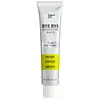What's inside
What's inside
 Key Ingredients
Key Ingredients

 Benefits
Benefits

 Concerns
Concerns

 Ingredients Side-by-side
Ingredients Side-by-side

Isododecane
EmollientWater
Skin ConditioningAcrylates/Isobornyl Acrylate Copolymer
Dimethicone Crosspolymer
Emulsion StabilisingSilica Silylate
EmollientAlcohol Denat.
AntimicrobialPolyhydroxystearic Acid
EmulsifyingDimethicone
EmollientLauryl PEG-9 Polydimethylsiloxyethyl Dimethicone
Skin ConditioningHydrogenated Styrene/Butadiene Copolymer
Phenoxyethanol
PreservativeSodium Acrylates Crosspolymer-2
AbsorbentCaprylyl Glycol
EmollientPEG/PPG-18/18 Dimethicone
EmulsifyingMagnesium Sulfate
Silica
AbrasiveTocopherol
AntioxidantTris-BHT Mesitylene
AntioxidantIsododecane, Water, Acrylates/Isobornyl Acrylate Copolymer, Dimethicone Crosspolymer, Silica Silylate, Alcohol Denat., Polyhydroxystearic Acid, Dimethicone, Lauryl PEG-9 Polydimethylsiloxyethyl Dimethicone, Hydrogenated Styrene/Butadiene Copolymer, Phenoxyethanol, Sodium Acrylates Crosspolymer-2, Caprylyl Glycol, PEG/PPG-18/18 Dimethicone, Magnesium Sulfate, Silica, Tocopherol, Tris-BHT Mesitylene
Water
Skin ConditioningNiacinamide
SmoothingCetyl Alcohol
EmollientCaprylic/Capric Triglyceride
MaskingGlycerin
HumectantPropanediol
SolventIsononyl Isononanoate
EmollientJojoba Esters
EmollientPEG-20 Methyl Glucose Sesquistearate
EmulsifyingCetearyl Alcohol
EmollientDimethicone
EmollientMethyl Glucose Sesquistearate
EmollientAsparagopsis Armata Extract
Skin ProtectingCeramide NP
Skin ConditioningCeramide AP
Skin ConditioningPotassium Sorbate
PreservativeCeramide EOP
Skin ConditioningSorbitol
HumectantCarbomer
Emulsion StabilisingZinc Citrate
Behentrimonium Methosulfate
Triethanolamine
BufferingAloe Barbadensis Leaf Extract
EmollientSodium Lauroyl Lactylate
EmulsifyingSodium Hydroxide
BufferingEquisetum Arvense Extract
AstringentSodium Hyaluronate
HumectantCholesterol
EmollientPhenoxyethanol
PreservativePrunus Amygdalus Dulcis Oil
Skin ConditioningTocopherol
AntioxidantAscophyllum Nodosum Extract
Skin ConditioningLaureth-4
EmulsifyingHydrogenated Vegetable Oil
EmollientTetrasodium EDTA
Maltodextrin
AbsorbentPhytosphingosine
Skin ConditioningXanthan Gum
EmulsifyingButylene Glycol
HumectantEthylhexylglycerin
Skin ConditioningChrysanthellum Indicum Extract
Skin ConditioningWater, Niacinamide, Cetyl Alcohol, Caprylic/Capric Triglyceride, Glycerin, Propanediol, Isononyl Isononanoate, Jojoba Esters, PEG-20 Methyl Glucose Sesquistearate, Cetearyl Alcohol, Dimethicone, Methyl Glucose Sesquistearate, Asparagopsis Armata Extract, Ceramide NP, Ceramide AP, Potassium Sorbate, Ceramide EOP, Sorbitol, Carbomer, Zinc Citrate, Behentrimonium Methosulfate, Triethanolamine, Aloe Barbadensis Leaf Extract, Sodium Lauroyl Lactylate, Sodium Hydroxide, Equisetum Arvense Extract, Sodium Hyaluronate, Cholesterol, Phenoxyethanol, Prunus Amygdalus Dulcis Oil, Tocopherol, Ascophyllum Nodosum Extract, Laureth-4, Hydrogenated Vegetable Oil, Tetrasodium EDTA, Maltodextrin, Phytosphingosine, Xanthan Gum, Butylene Glycol, Ethylhexylglycerin, Chrysanthellum Indicum Extract
 Reviews
Reviews

Alternatives
Ingredients Explained
These ingredients are found in both products.
Ingredients higher up in an ingredient list are typically present in a larger amount.
Dimethicone is a type of synthetic silicone created from natural materials such as quartz.
What it does:
Dimethicone comes in different viscosities:
Depending on the viscosity, dimethicone has different properties.
Ingredients lists don't always show which type is used, so we recommend reaching out to the brand if you have questions about the viscosity.
This ingredient is unlikely to cause irritation because it does not get absorbed into skin. However, people with silicone allergies should be careful about using this ingredient.
Note: Dimethicone may contribute to pilling. This is because it is not oil or water soluble, so pilling may occur when layered with products. When mixed with heavy oils in a formula, the outcome is also quite greasy.
Learn more about DimethiconePhenoxyethanol is a preservative that has germicide, antimicrobial, and aromatic properties. Studies show that phenoxyethanol can prevent microbial growth. By itself, it has a scent that is similar to that of a rose.
It's often used in formulations along with Caprylyl Glycol to preserve the shelf life of products.
Tocopherol (also known as Vitamin E) is a common antioxidant used to help protect the skin from free-radicals and strengthen the skin barrier. It's also fat soluble - this means our skin is great at absorbing it.
Vitamin E also helps keep your natural skin lipids healthy. Your lipid skin barrier naturally consists of lipids, ceramides, and fatty acids. Vitamin E offers extra protection for your skin’s lipid barrier, keeping your skin healthy and nourished.
Another benefit is a bit of UV protection. Vitamin E helps reduce the damage caused by UVB rays. (It should not replace your sunscreen). Combining it with Vitamin C can decrease sunburned cells and hyperpigmentation after UV exposure.
You might have noticed Vitamin E + C often paired together. This is because it is great at stabilizing Vitamin C. Using the two together helps increase the effectiveness of both ingredients.
There are often claims that Vitamin E can reduce/prevent scarring, but these claims haven't been confirmed by scientific research.
Learn more about TocopherolWater. It's the most common cosmetic ingredient of all. You'll usually see it at the top of ingredient lists, meaning that it makes up the largest part of the product.
So why is it so popular? Water most often acts as a solvent - this means that it helps dissolve other ingredients into the formulation.
You'll also recognize water as that liquid we all need to stay alive. If you see this, drink a glass of water. Stay hydrated!
Learn more about Water